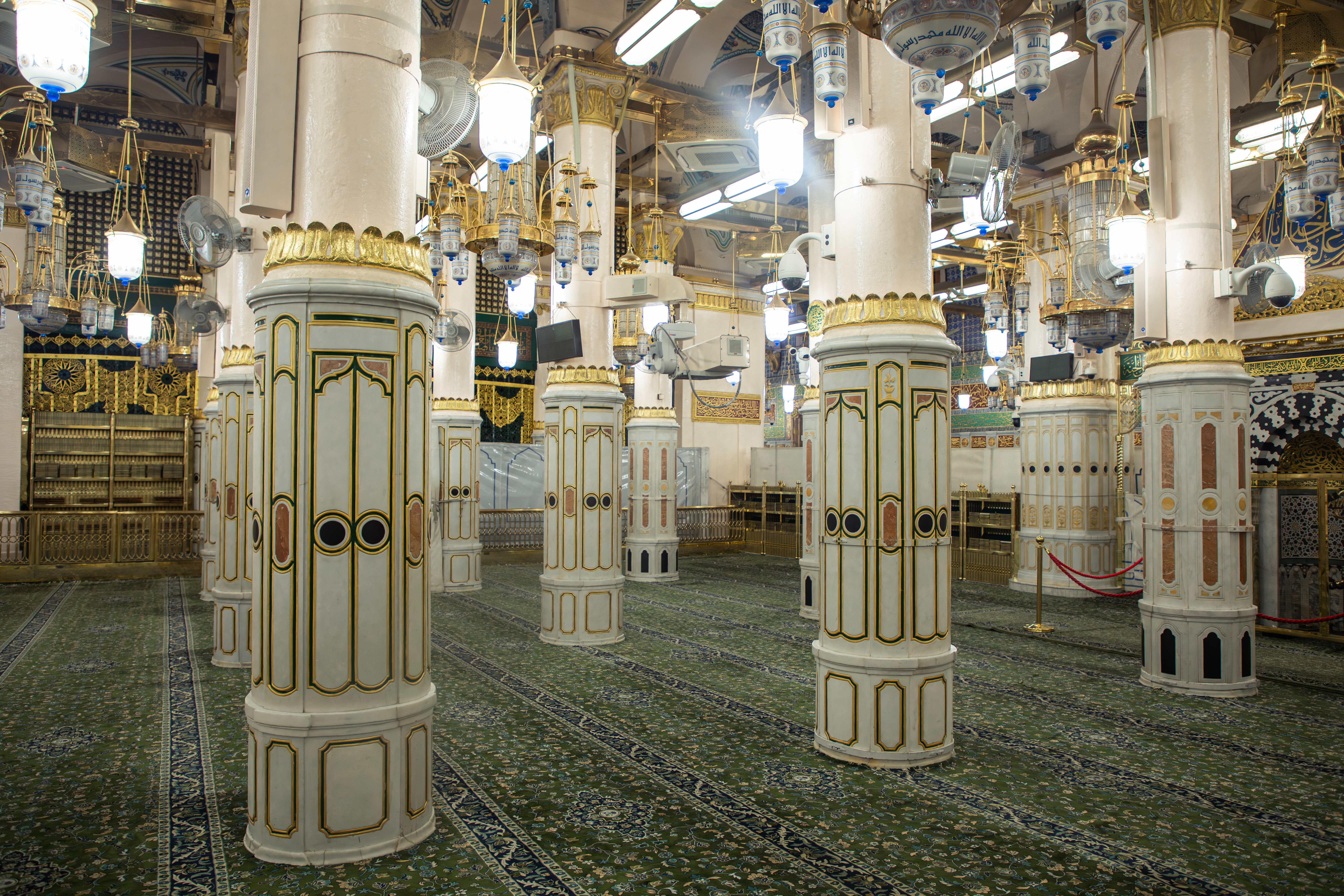
The Noble Rawdah is the blessed area located between the house of the Prophet Muhammad (peace and blessings be upon him), the house of Lady Aishah (may Allah be pleased with her), and the Blessed Minbar. The Prophet (peace and blessings be upon him) said, "Between my house and my Minbar is a garden from the gardens of Paradise." Historians have relied on this Hadith when documenting the Prophet’s Mosque.
Boundaries of the Noble Rawdah
-
East: The house of Lady Aishah (may Allah be pleased with her).
-
West: The Blessed Minbar.
-
South: The Qibla (direction of prayer).
-
North: The line parallel to the end of Lady Aishah’s house.
The Noble Rawdah covers an area of approximately 330 square meters, with a length of 22 meters and a width of 15 meters.
Virtue of Praying in the Noble Rawdah
Praying in the Noble Rawdah is considered one of the most virtuous acts of worship. Visitors to the Prophet’s Mosque are eager to perform voluntary prayers there, as it is deemed superior to any other place in the mosque. For obligatory prayers, however, the first row is preferred, even if outside the Rawdah. Ibn Qasim said, "The best place for voluntary prayers in the Prophet’s Mosque is the Rawdah, and for obligatory prayers, the first row."
Organizing Prayer in the Noble Rawdah
Due to the limited space and high demand, visiting the Noble Rawdah requires prior booking through the "Nusuk" app to allow as many visitors as possible to pray there.
Visiting Hours of the Noble Rawdah
For Men
-
First Period: From 12:30 AM until the Fajr (Dawn) prayer.
-
Second Period: From 12:30 PM until the Isha (Evening) prayer (continuous).
For Women
-
First Period: From 5:30 AM to 11:00 AM.
-
Second Period: From 9:30 PM to 12:00 midnight.
The Noble Rawdah in Numbers
-
Over 10 million visitors prayed in the Noble Rawdah in 2024, including 5,583,885 men and 4,726,247 women.
-
Average waiting time before entry: 20 minutes.
-
Daily visitor count reaches 48,000.
-
Awareness programs are available in 11 languages.
Praying in this blessed spot is one of the most significant acts of worship in the Prophet’s Mosque, combining the virtue of the place with the blessing of the act of worship.